
Renga Piping
Renga – Renga is a BIM system for the architectural, structural design and MEP engineering of buildings.
The products of Renga Software are intended for integrated design: the information model of a construction object created in the Renga system can be used in other stages of its life cycle.
Designing Water Supply and Sewage Systems
Use Renga to create consistent, coordinated and complete information models of water supply and sewage systems. Renga toolset is a time saver for engineers who want to speed up routine tasks like routing pipes inside buildings and facilities, populating building model with engineering data, and generating drawings.
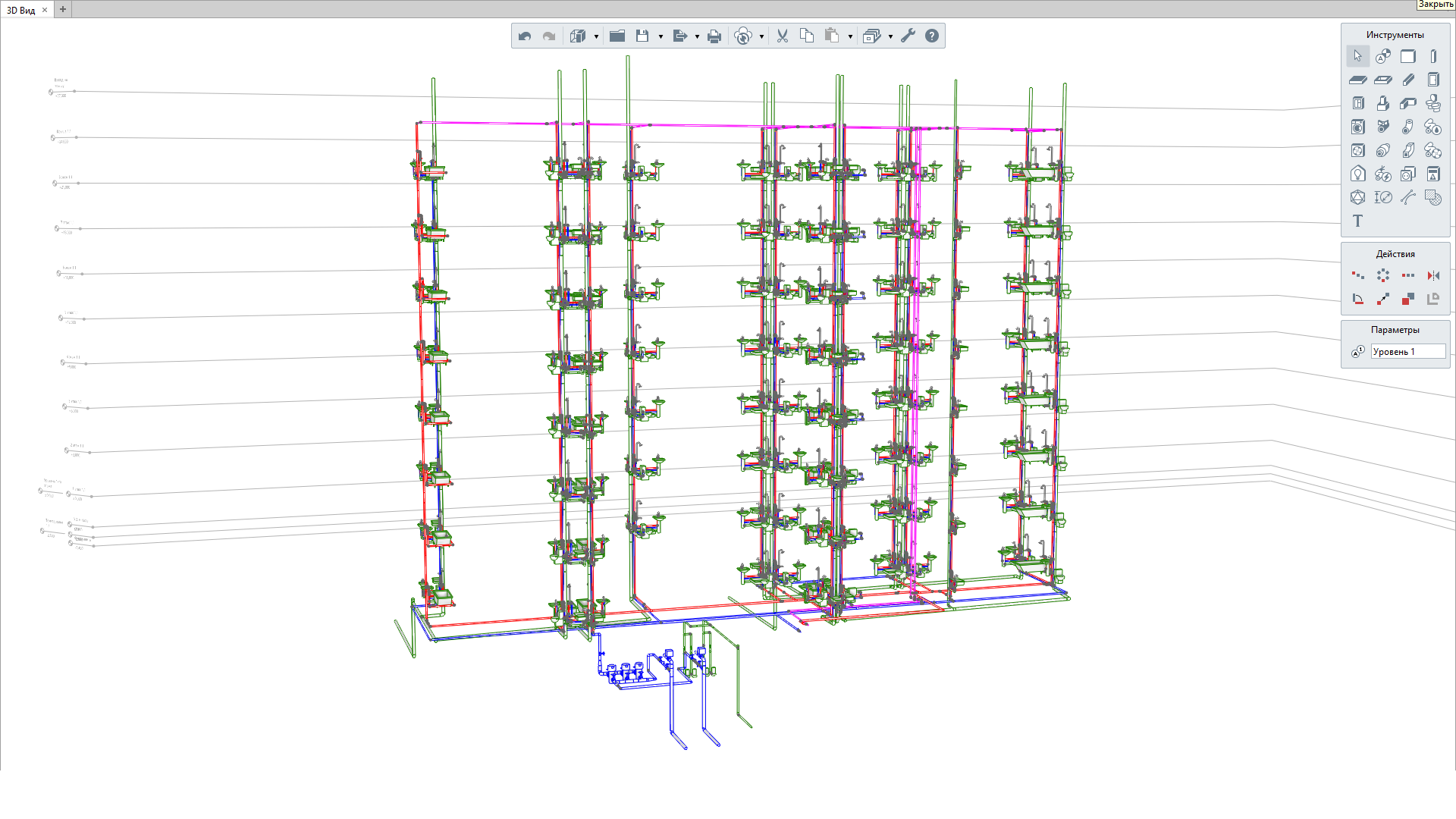
Designing Water Supply and Sewage Systems
Heating System Design
Use Renga to create consistent, coordinated and complete information models of heating system. Renga toolset is a time saver for engineers who want to speed up routine tasks like routing feeding and reverse heating pipes, populating building model with engineering data, and generating drawings.

Figure 2: Steel Structures Design
Collecting and Receiving Data
There are two ways for engineers to create water supply and sewage systems or heating system in Renga software.
First, by receiving existing 3D building models from architects or structural engineers. Team effort is a key. And Renga developers pack a powerful punch in this department implementing feature for worksharing. Renga software helps architects, designers and MEP engineers simultaneously work in the common design environment. All project stakeholders work with the up-to-date model data, saving time and improving accuracy.
Or second, by receiving 2D drawings from the architect or structural engineer and creating 3D model of heating system by themselves. The MEP engineer can also use 2D drawings as underlay.
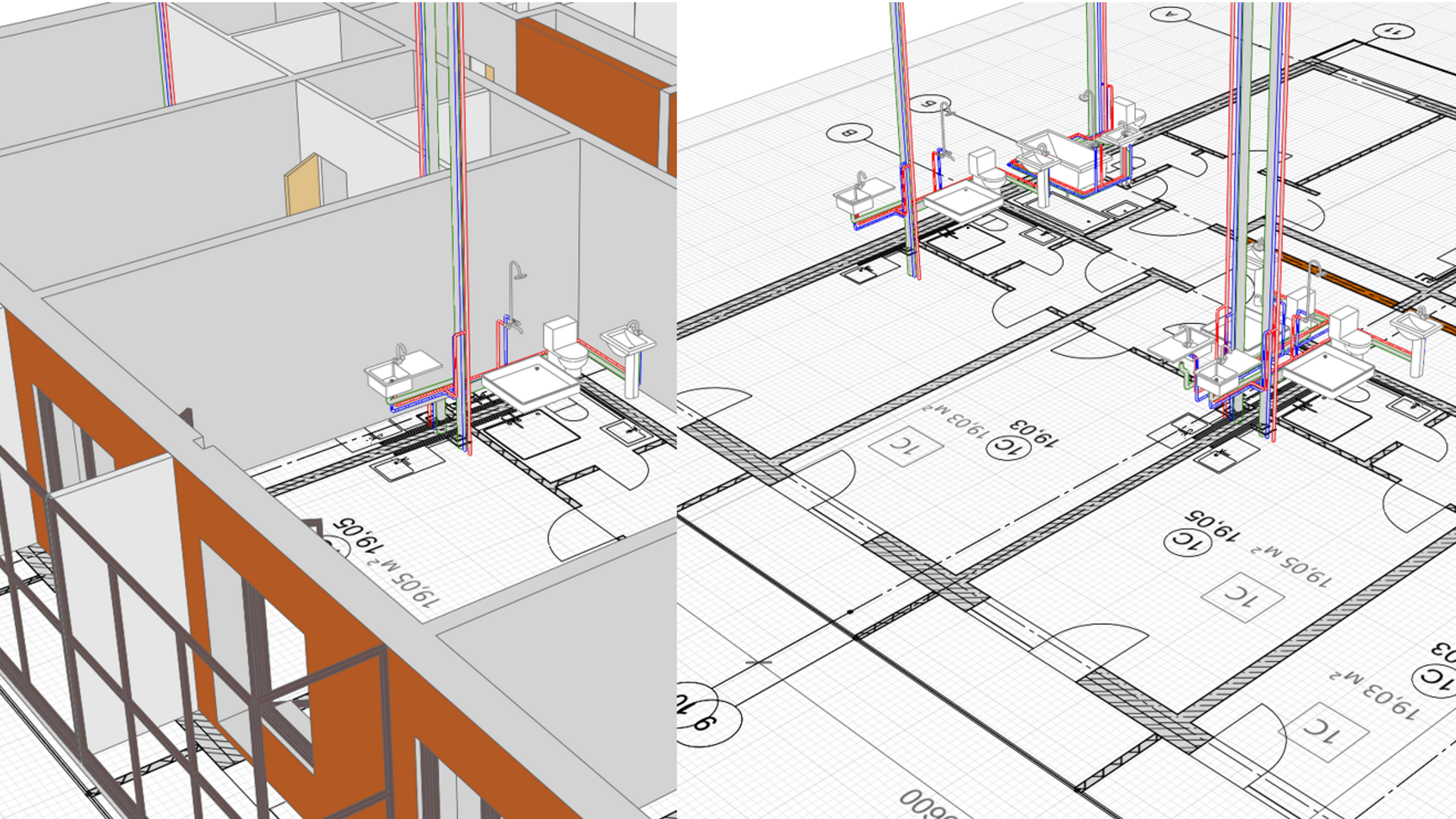
Collecting and Receiving Data
Load Calculation
All project stakeholders can have access to the information model, and access and change data for each object in a model.
For example, MEP engineers can immediately get required object data on enclosing structures, materials, types and dimensions of spaces, production equipment layout and utility corridors layout, etc. Based on this data, an engineer can easily calculate the heating and cooling requirements of a building.

Load Calculation
Equipment Layout
Design an information model of structural building components and create drawings of structural steel, reinforced concrete, architectural and structural drawings and many others.
Taking into account the entire load data and building demands for heating system, an engineer creates an equipment layout plan. Empty library is no longer a problem - software provides users with tools needed for creating new ones. Renga allows the user to design independently of Element library with the Style tool that creates required elements in less than a minute.
You can also import 3D objects to your model should the need arise. Renga interacts with other software via international open file format IFC, as well as reading and exporting to a great number of supported formats including STEP, IGES, C3D, SAT, etc. Apart from that, Renga provides users with product gauges and product lines provided by the leading suppliers or manufacturers.
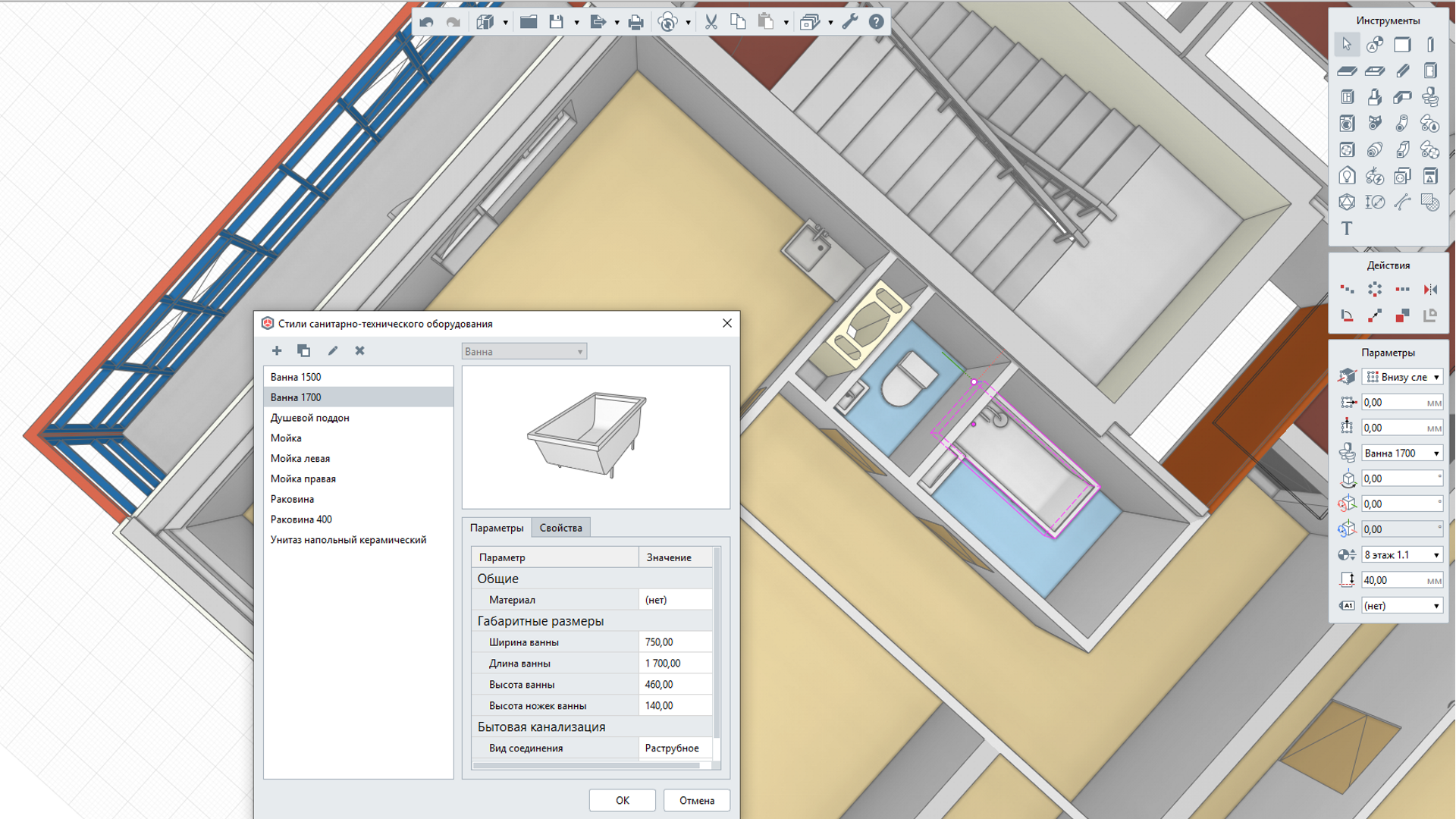
Equipment Layout
Routing
Unique Automatic Routing tool helps you design water supply and sewerage systems or heating system. The tool builds pipe system based on control points that were placed by the engineer. Another efficient feature implemented in Renga is System Builder mode. Using this mode, you can offset from floors and walls, specify objects connection sequence and simultaneously create routs. The tool allows for the drawing of trunk pipelines and fittings. This tool can be easily adjusted to match the required criteria and standards.
Renga offers more visual way to improve spatial design, by considering architectural elements (walls, foundations, beams, columns, openings) during the design process. User can clearly see the layout of heating system elements and their position to each other. It reduces the chance for discrepancies between architectural, structural and MEP models, validating the accuracy and consistency of the model.
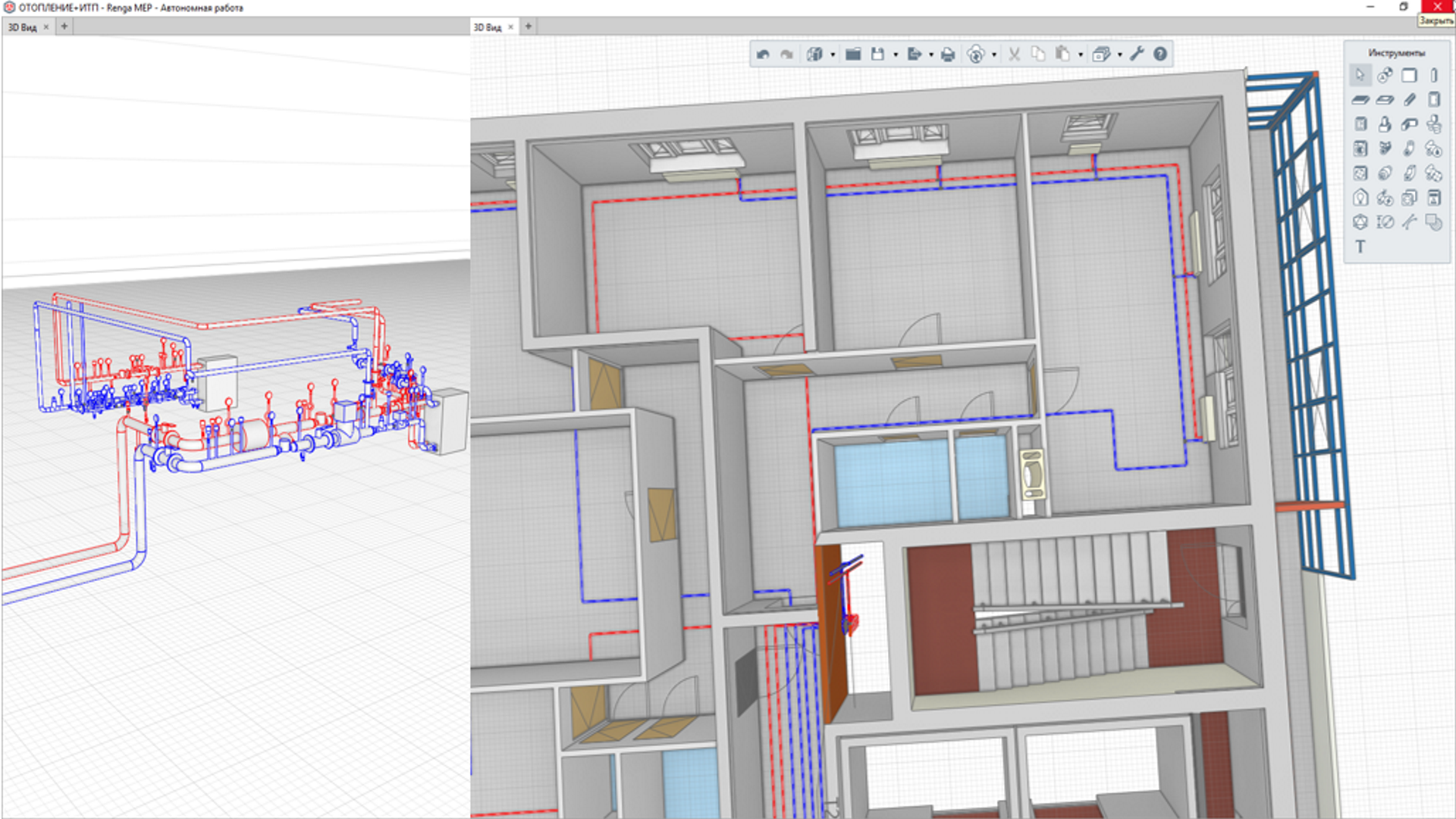
Routing
Automatic Calculations
You can perform required calculations and create estimates, choosing from a variety of analysis packages developed by Renga partners, and import the resulting file from any of these software packages into Renga.

Automatic Calculations
Automatic Recalculation of Schedules
To perform accurate calculations for all heating system elements, use the Schedule tool. It automatically collects object data and generates reports in a table format. In the event of changes to the 3D model, schedule recalculates automatically.

Automatic Recalculation of Schedules
Document the Project
Create coordinated and complete project documentation of water supply and sewerage systems or heating systems using the built-in Drawing Editor. It will help to create drawings in accordance with both Russian System of Design Documentation for Construction (SPDS) and the International Organization for Standardization (ISO).
Editor is designed to take drawings generation automation to the maximum. Plans and axonometric projections are checked out automatically right from the 3D model.
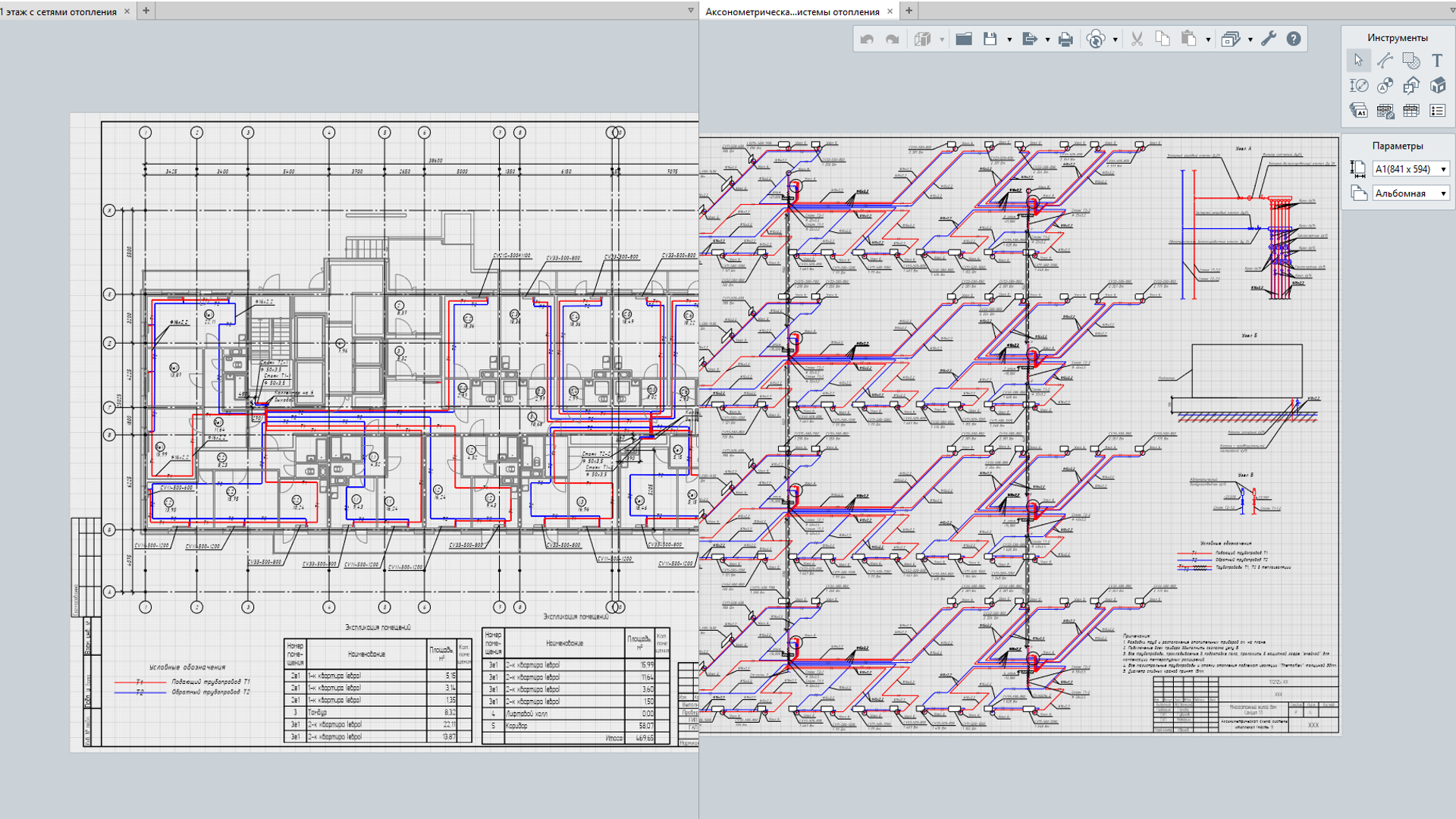
Document the Project
Worksharing in Renga
In the Renga BIM system, the architects, designers and MEP engineers work in a single environment with the same 3D model. Each member of the project team can track the changes their colleagues have made. This feature reduces the chance for discrepancies between architectural, structural and MEP models, validating the accuracy and consistency of the model. It also shortens the approval cycle.
It's also extremely important to allow all the project stakeholders to work in a common data environment. If other team members create their part of project documentation using different software, they can validate it at the BIM model level by exporting data to an open file format IFC, or at the drawing level by exporting data to the DWG/DFX format. The change requests can be conveniently exchanged with between domains through data management system like Pilot-ICE.
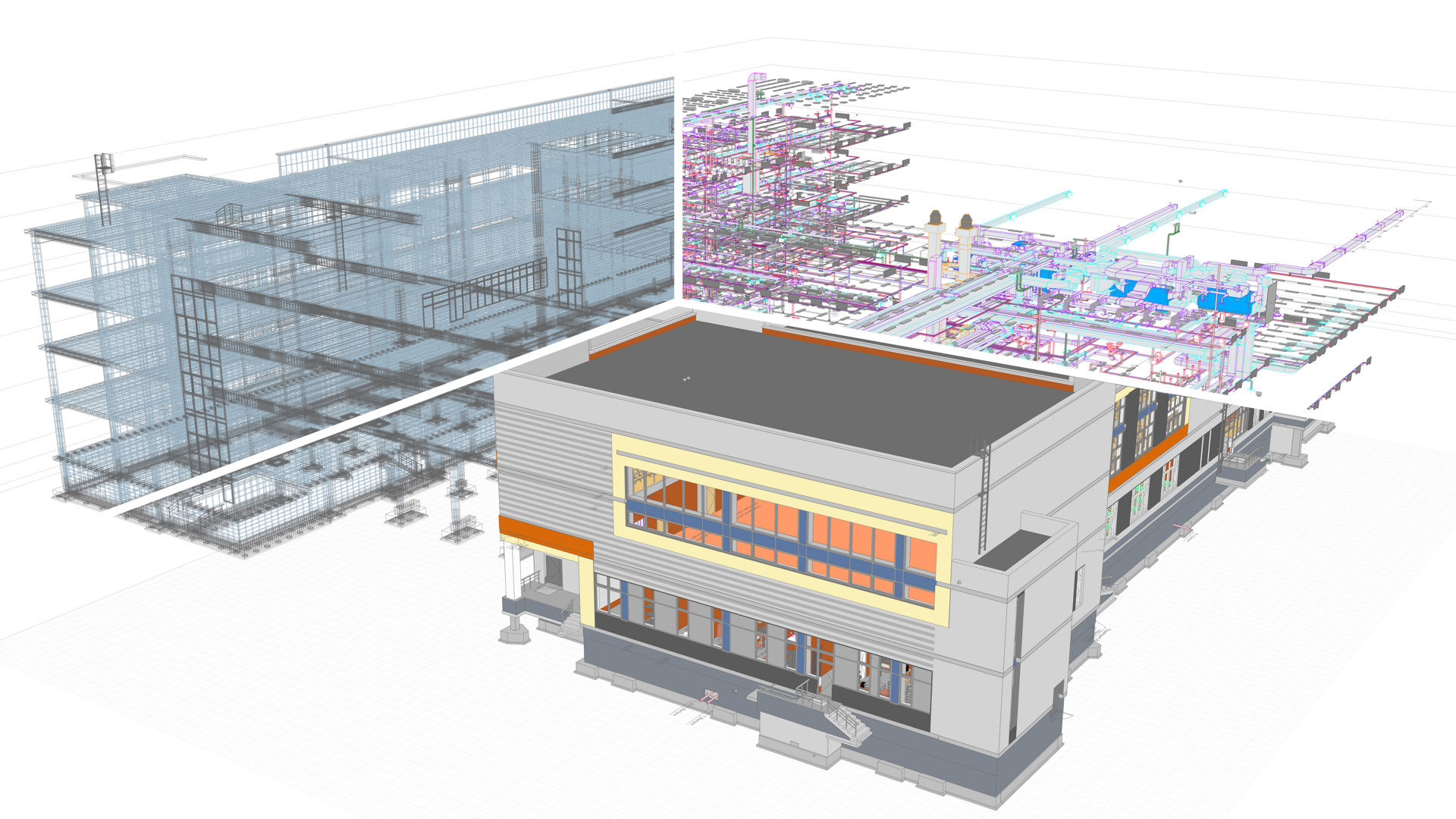
Worksharing in Renga
Contains
Renga Architectural
Renga Collaboration
Renga Electrical
Renga Structural
Renga Ventilation
Supported languages
english
russian
System Requirements
Мinimum System Requirements:
- Processor: 64-bit (x64) processor with 2GHz clock speed or higher
- Memory: 4GB for 64-bit system
- Video adapter: Graphics board supporting DirectX 10, Shader Model 4.0, true color mode
- Monitor: 1280x1024 minimum resolution
- Input device: Three-button mouse
- Operating system: Microsoft Windows 7 SP1 with Platform Update for Windows 7 64-bit version
Recommended System Requirements:
- Processor: 4-core Intel Core i5, i7 or similar AMD 64-bit processor with 3GHz clock speed or higher
- Memory: 16GB RAM or more
- Video adapter: NVidia GTX77x, such as GeForce GTX 970, GeForce GTX 980, GeForce GTX 780 AMD graphics board with DirectX 11, Shader Model 4.0, true color mode
- Monitor: 1920x1080 resolution
- Input device: Three-button mouse
- Operating system: Microsoft Windows 10 (64-bit)
Producer
Renga
FREE DOWNLOAD
Runs for 60 days from the date of installation. Available in English
add-on
Artisan rendering for Renga
Artisan Rendering runs closely with Renga Architecture so that users can create high quality, photorealistic images of buildings and structures they design in Renga Architecture.
Artisan Rendering was developed specifically for ASCON Group by PICTOREX Ltd, one of the leading international suppliers of visualization solutions.
add-on
Model Explorer
Extend your design development capabilities and explore more options for working with 3D model by using this effective tool. It provides quick access to parameters of selected element, allows to change custom properties value and control object visibility.